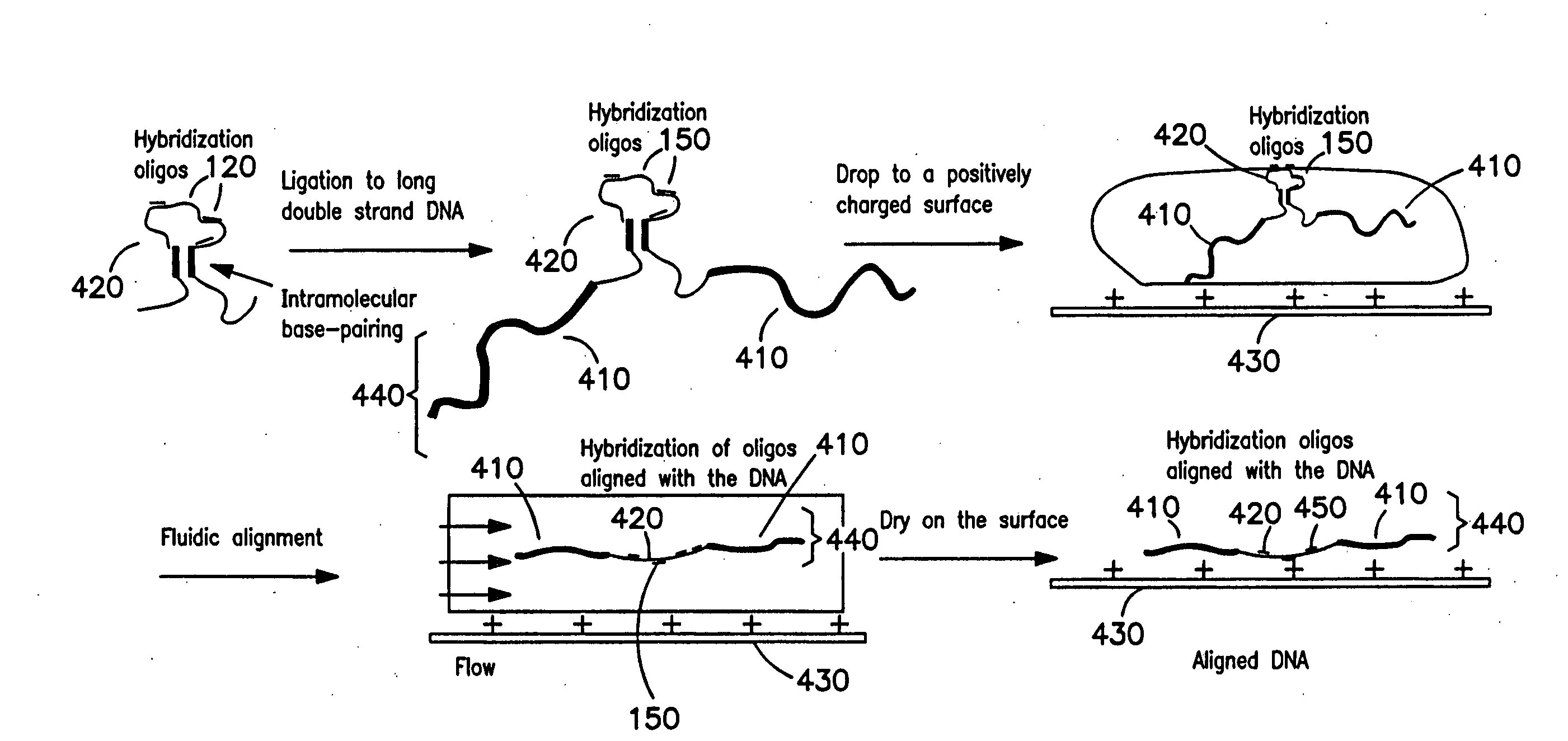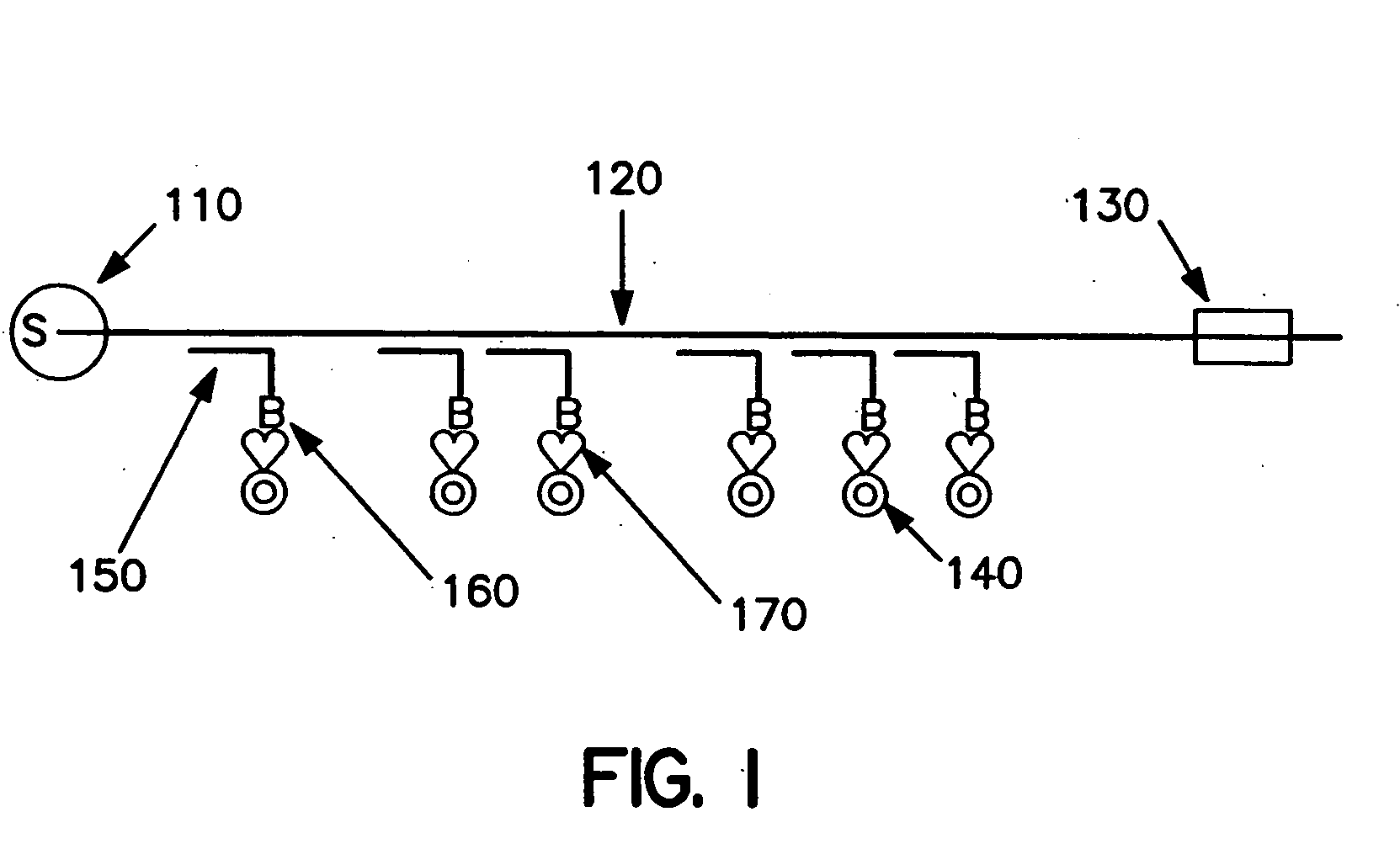Methods of producing carbon nanotubes using peptide or nucleic acid micropatterning
a technology of carbon nanotubes and peptides, applied in nanomedicine, nanoinformatics, organic chemistry, etc., can solve the problems of inability to provide optimal performance characteristics for various electrical and/or mechanical devices, and no efficient method exists to efficiently produce ordered nanoscale or microscale assemblies of carbon nanotubes attached
- Summary
- Abstract
- Description
- Claims
- Application Information
AI Technical Summary
Benefits of technology
Problems solved by technology
Method used
Image
Examples
Embodiment Construction
[0011]As disclosed in more detail, provided herein is a method for producing carbon nanotubes that includes attaching one or more catalyst nanoparticles 140, 230 to one or more polymer 120, 210 molecules, attaching the polymer 120, 210 molecules to a substrate, typically removing the polymer 120, 210 molecules, and producing carbon nanotubes on the catalyst nanoparticles 140, 230. The polymer molecules 120, 210, can be, for example, a nucleic acid 120 or a peptide 210, which is optionally aligned before nanotubes are produced.
[0012]As used herein, “a’ or “an” can mean one or more than one of an item.
[0013]As used herein, the term “about” when applied to a number means within plus or minus ten percent of that number. For example, “about 100” means any number between 90 and 110.
[0014]“Nucleic acid”120 encompasses DNA (deoxyribonucleic acid), RNA (ribonucleic acid), single-stranded, double-stranded or triple stranded and any chemical modifications thereof. The term also encompasses any...
PUM
| Property | Measurement | Unit |
|---|---|---|
| length | aaaaa | aaaaa |
| bond length | aaaaa | aaaaa |
| physical properties | aaaaa | aaaaa |
Abstract
Description
Claims
Application Information
 Login to View More
Login to View More - R&D
- Intellectual Property
- Life Sciences
- Materials
- Tech Scout
- Unparalleled Data Quality
- Higher Quality Content
- 60% Fewer Hallucinations
Browse by: Latest US Patents, China's latest patents, Technical Efficacy Thesaurus, Application Domain, Technology Topic, Popular Technical Reports.
© 2025 PatSnap. All rights reserved.Legal|Privacy policy|Modern Slavery Act Transparency Statement|Sitemap|About US| Contact US: help@patsnap.com



